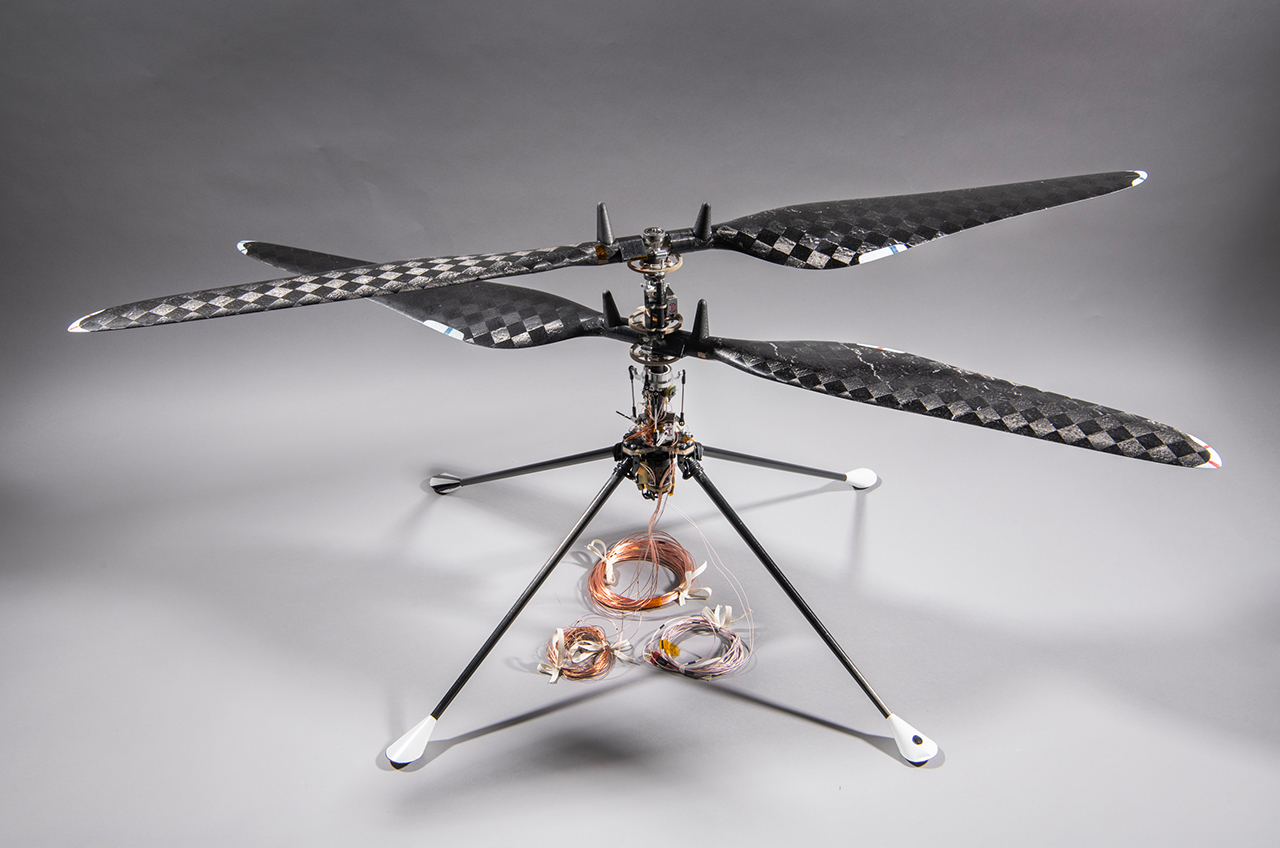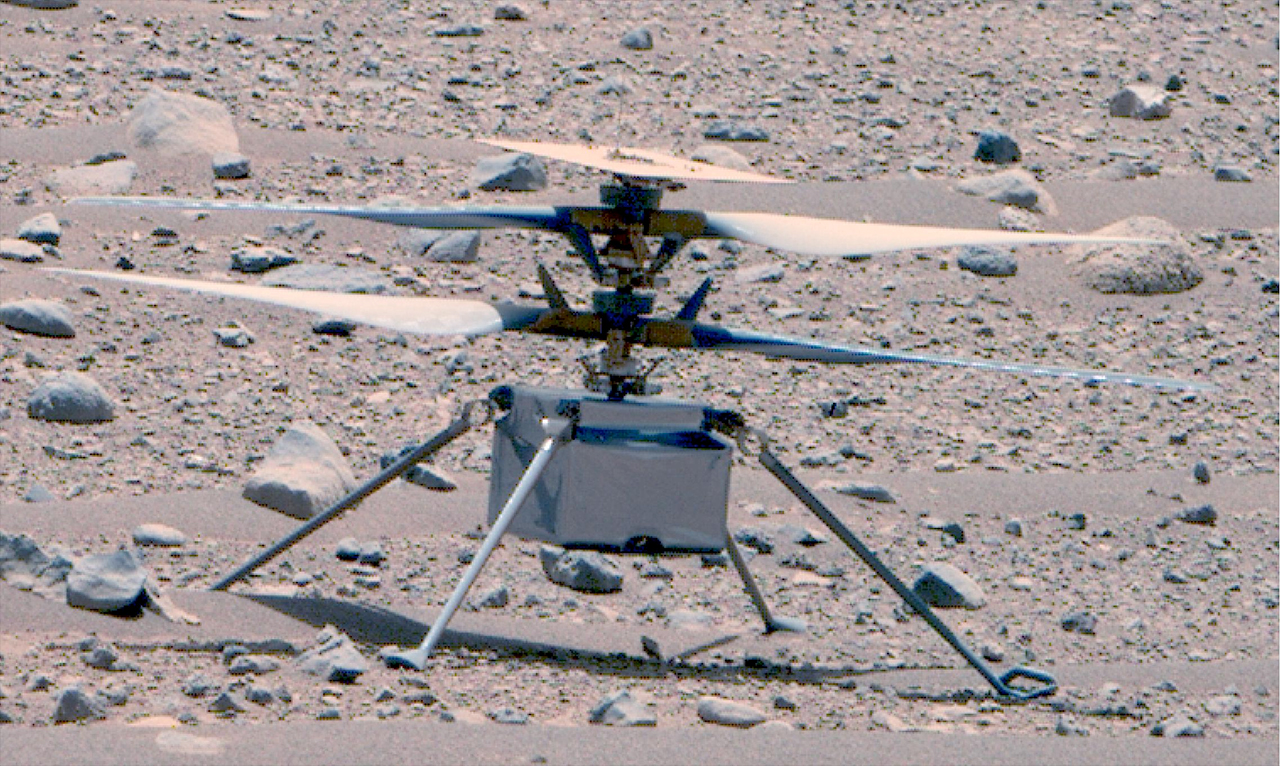NASA donates Ingenuity Mars Helicopter prototype to Smithsonian
'This is something that I had at the top of my wish list ever since I heard that Ingenuity was flying along with Perseverance.'

The Smithsonian would love to display the first vehicle to achieve powered flight on another world, but with NASA's Ingenuity helicopter still busy setting records on Mars, the Washington, D.C. institution has accepted the next best thing.
Officials from NASA and the Smithsonian's National Air and Space Museum marked the agency's donation of the aerial prototype for Ingenuity into the museum's collection at the Steven F. Udvar-Hazy Center in Chantilly, Virginia on Friday (Dec. 15). The full-scale prototype was the first to demonstrate that an aircraft could fly in the atmosphere of another planet during tests performed at NASA's Jet Propulsion Laboratory (JPL) in Pasadena, California.
The prototype's first free flight in a simulated Mars environment gave NASA the confidence to commit to sending Ingenuity to Mars. The helicopter and its companion Perseverance rover landed in Jezero Crater on Feb. 18, 2021.
"This is something that I had at the top of my wish list ever since I heard that Ingenuity was flying along with Perseverance," Matt Shindell, curator for planetary science and exploration at the National Air and Space Museum, said in an interview with collectSPACE.com. "I really wanted to bring into the museum at some point some piece of [the Mars Helicopter's] development that would speak to both the process of developing this new technology and to represent that technology itself in future exhibits."
The prototype's May 31, 2016 flight took place in JPL's Space Simulator, a 25-foot-wide (7.6 meters) vacuum chamber. The Martian atmosphere was simulated by first evacuating the air from the chamber and then backfilling it with a small amount of carbon dioxide.
Related: Mars helicopter Ingenuity: First aircraft to fly on Red Planet
The prototype was built to be the same size as the rotorcraft flown to Mars, but differed in construction in some significant ways.
"The system was still a skeleton," Teddy Tzanetos, Ingenuity's project manager, said in a 2020 presentation delivered as part of a workshop on planetary exploration robots. "It had the [infrared] tracking balls to track the motion of the helicopter in the chamber, but there was no power system on board, no computer on board. It was really just an actuator, but this let us baby-step our way forward."
"A lot of Ingenuity [was] baby-stepping the entire project forward one step at a time to get ready for launch," Tzanetos said. "This [the first flight of the prototype] was the big check mark for the project to say, 'Yes! We can fly controllably in the Mars atmosphere. Let's move on to the next step.'"
The prototype was followed by more complete engineering models that integrated the needed systems for what would become the Mars Helicopter. As of Friday, Ingenuity had completed 67 flights, including 63 devoted to scouting out the path forward for the Perseverance rover. Its team is now preparing to fly Ingenuity on its longest flight to date — 2,717 feet (828 m) — which is considerably farther than the current distance record of 2,310 feet (704 m) set on flight 25 in 2022.
Ingenuity's 68th flight is targeted for a top speed of 22.4 miles per hour (36 kph), which will tie a velocity record set this past October. The hop will last 147 seconds and take the helicopter a maximum of 33 feet (10 m) above the Martian surface.
While Ingenuity continues to fly, its prototype will begin undergoing conservation and treatment so that the Smithsonian can properly store and display it for years to come. A decision as to where it will be exhibited in the National Air and Space Museum has yet to be made.
"What gets sent to Mars, except in rare instances, doesn't come back to us," said Shindell. "So what we tend to end up collecting are the prototypes and the engineering models, the things that are developed along the way to a successful spacecraft mission and then allow the engineers to solve problems and develop the technology as they go."
"We're happy that they can also stand in for the flown spacecraft, but really what determines their significance to us as curators and why they belong in the museum's collection is that they played a pivotal role in the development of the flown mission," he said. "This prototype is really a wonderful example of why these unknown articles are historically significant and need to be preserved by museums."
Follow collectSPACE.com on Facebook and on Twitter at @collectSPACE. Copyright 2023 collectSPACE.com. All rights reserved.
Breaking space news, the latest updates on rocket launches, skywatching events and more!

Robert Pearlman is a space historian, journalist and the founder and editor of collectSPACE.com, a daily news publication and community devoted to space history with a particular focus on how and where space exploration intersects with pop culture. Pearlman is also a contributing writer for Space.com and co-author of "Space Stations: The Art, Science, and Reality of Working in Space” published by Smithsonian Books in 2018.
In 2009, he was inducted into the U.S. Space Camp Hall of Fame in Huntsville, Alabama. In 2021, he was honored by the American Astronautical Society with the Ordway Award for Sustained Excellence in Spaceflight History. In 2023, the National Space Club Florida Committee recognized Pearlman with the Kolcum News and Communications Award for excellence in telling the space story along the Space Coast and throughout the world.



